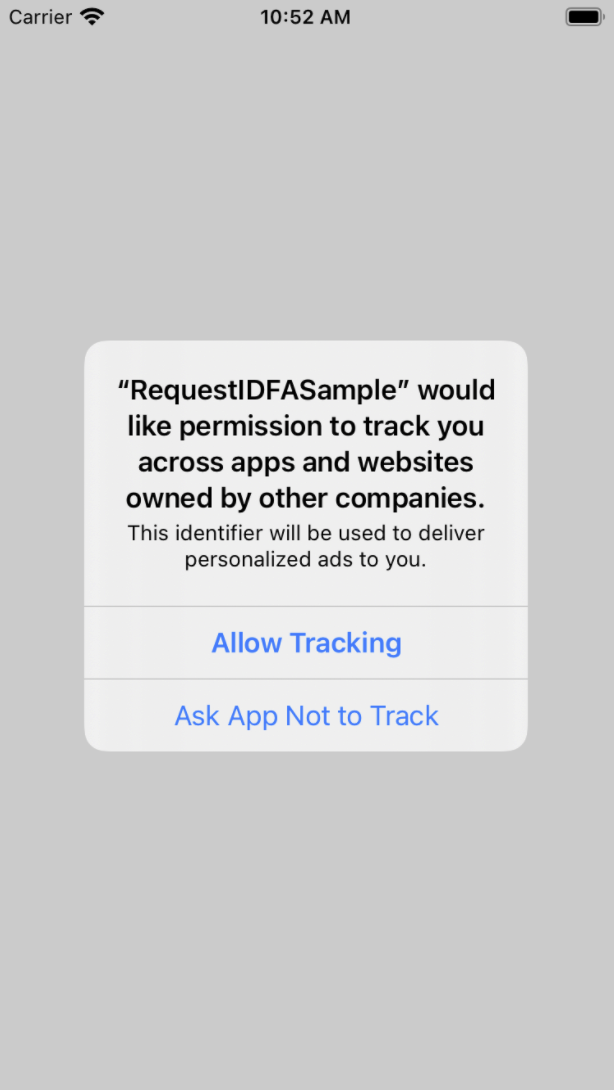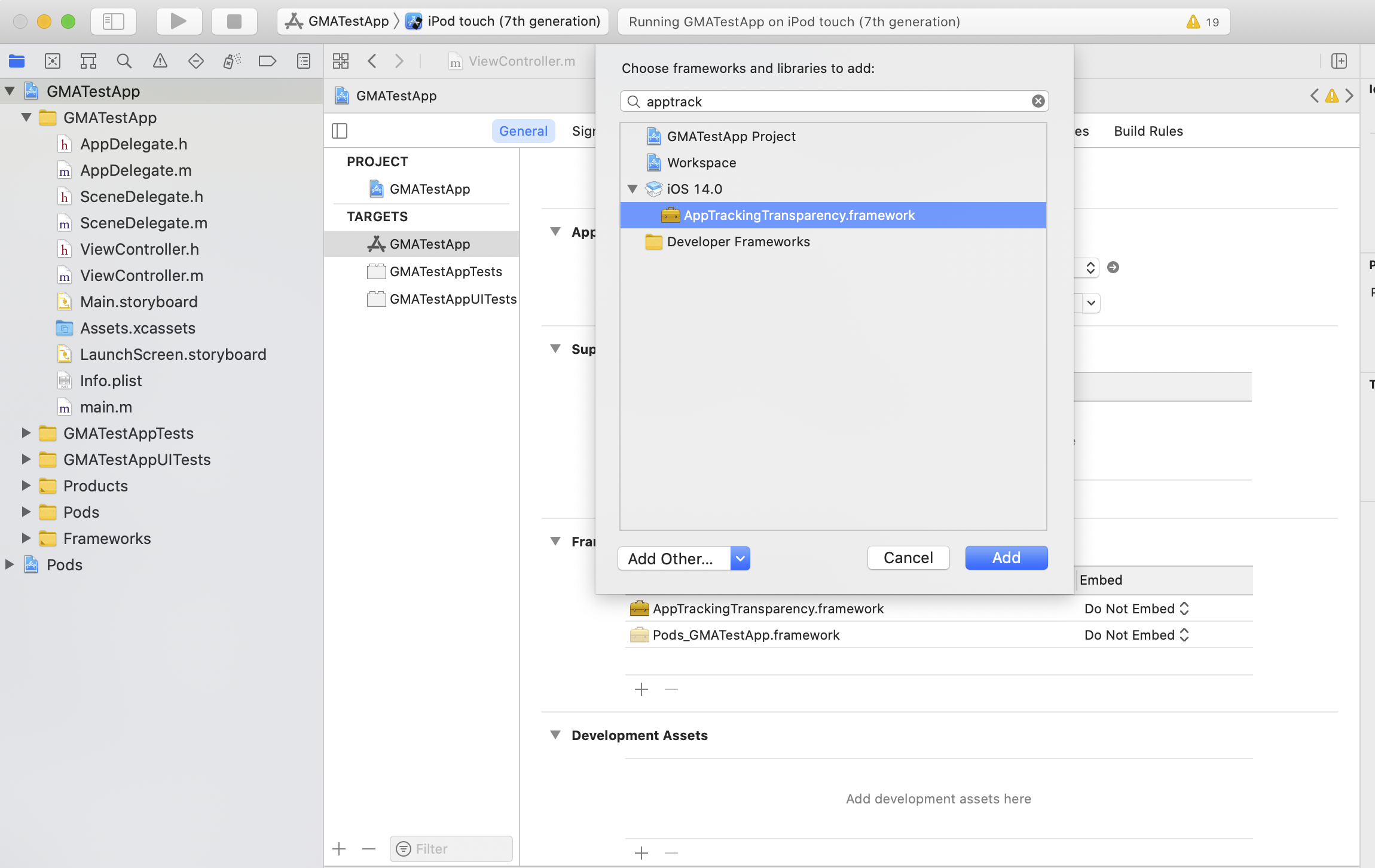کیت توسعه نرمافزار (SDK) پلتفرم پیامرسانی کاربر (UMP) به شما امکان میدهد قبل از درخواست رضایت کاربران برای شفافیت ردیابی برنامه (ATT)، یک پیام IDFA به آنها ارائه دهید. پیام IDFA به کاربران شما نشان میدهد که برنامه شما چگونه از شناسه استفاده میکند.
این راهنما نحوهی استفاده از UMP SDK برای ارائهی یک پیام IDFA را پوشش میدهد.
پیشنیازها
قبل از شروع، مطمئن شوید که موارد زیر را انجام دادهاید:
- راهنمای شروع به کار را تکمیل کنید.
- یک پیام IDFA در رابط کاربری AdMob ایجاد کنید .
بهروزرسانی اطلاعات.plist
برای نمایش یک پیام هشدار سفارشی، موارد زیر را انجام دهید:
- فایل
Info.plistرا باز کنید. - کلید
NSUserTrackingUsageDescriptionرا به همراه یک پیام سفارشی که نحوهی استفاده از آن را شرح میدهد، اضافه کنید:
<key>NSUserTrackingUsageDescription</key>
<string>This identifier will be used to deliver personalized ads to you.</string>
شرح استفاده به عنوان بخشی از هشدار IDFA ATT هنگام ارائه فرم رضایتنامه ظاهر میشود:

سپس، فریمورک AppTrackingTransparency را لینک کنید:

سپس برنامه شما قبل از هشدار ATT، یک پیام IDFA نشان میدهد.
آزمایش
هنگام آزمایش، به یاد داشته باشید که هشدار ATT فقط یک بار ظاهر میشود زیرا requestTrackingAuthorization یک درخواست یکباره است. UMP SDK فقط در صورتی فرمی برای بارگذاری دارد که وضعیت مجوز ATTrackingManagerAuthorizationStatusNotDetermined باشد.
برای اینکه هشدار برای بار دوم ظاهر شود، باید برنامه خود را در دستگاه آزمایشی خود حذف و دوباره نصب کنید.
درخواست تبلیغات با یا بدون IDFA
اگر کاربری ATT را رد کرد، با استفاده از APIهای قالب تبلیغاتی خود، درخواست تبلیغات را ادامه دهید. SDK تبلیغات موبایلی گوگل IDFA را در درخواست تبلیغ ارسال نمیکند. برای جزئیات بیشتر، به «انتخاب قالب تبلیغ» مراجعه کنید.
